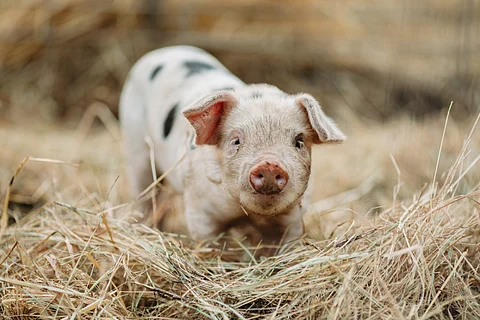

The detection of avian influenza A (H5N1) in a pig on a backyard farm in Oregon, United States, on October 31 has raised concerns due to the virus’s infection of a new mammalian host.
The case, first reported on October 25, involved a farm where poultry, livestock and five pigs shared space. Confirmation of the infection in a pig came from officials on 30 October. The strain involved, clade 2.3.4.4b of influenza A / H5N1, is currently spreading worldwide, affecting a broad range of species and showing potential to spark a new pandemic.
According to the agency Animal and Plant Health Inspection Service, the likely cause of infection was the sharing of water sources, housing and equipment between pigs and poultry, with 70 infected poultry culled earlier in October.
The US Centers for Disease Control and Prevention (CDC) issued a statement on November 4, expressing concern over the A (H5) virus’s adaptability in pigs, which are known to be susceptible to influenza viruses affecting humans, birds and other animals.
“These viruses can swap genes through a process called genetic reassortment, which can occur when two (or more) influenza viruses infect a single host. Reassortment can result in the emergence of new influenza A viruses with new or different properties, such as the ability to spread more easily among animals or people,” the CDC stated.
Pigs and humans share receptors in their respiratory tracts capable of binding both human and avian influenza viruses, a 2010 study published in BMC Veterinary Research journal has found. This similarity increases the potential for pigs to host and transmit bird flu and human flu viruses, creating a heightened risk of human transmission.
Such reassortment events have previously occurred in pigs, including an instance believed to have triggered the 2009 A(H1N1) pandemic, according to the CDC. However, it has maintained that the risk to the general public remains low, as “sequence data from birds in the avian influenza A(H5) virus outbreak on this backyard farm showed no mutations that caused concerns related to disease severity or adaptability to humans.”
To date, 44 human cases of avian flu have been detected in 2024, with 24 linked to cattle and 19 to poultry; one case remains untraceable. In the US, over a million poultry have been affected since January, with outbreaks reported in 48 states. Additionally, 10,465 wild birds have been infected and 403 dairy herds across 14 states have been impacted.
Since May 2022, avian influenza cases have been identified in 404 mammals across 23 species, including cats, polar bears, brown bears, coyotes and raccoons.